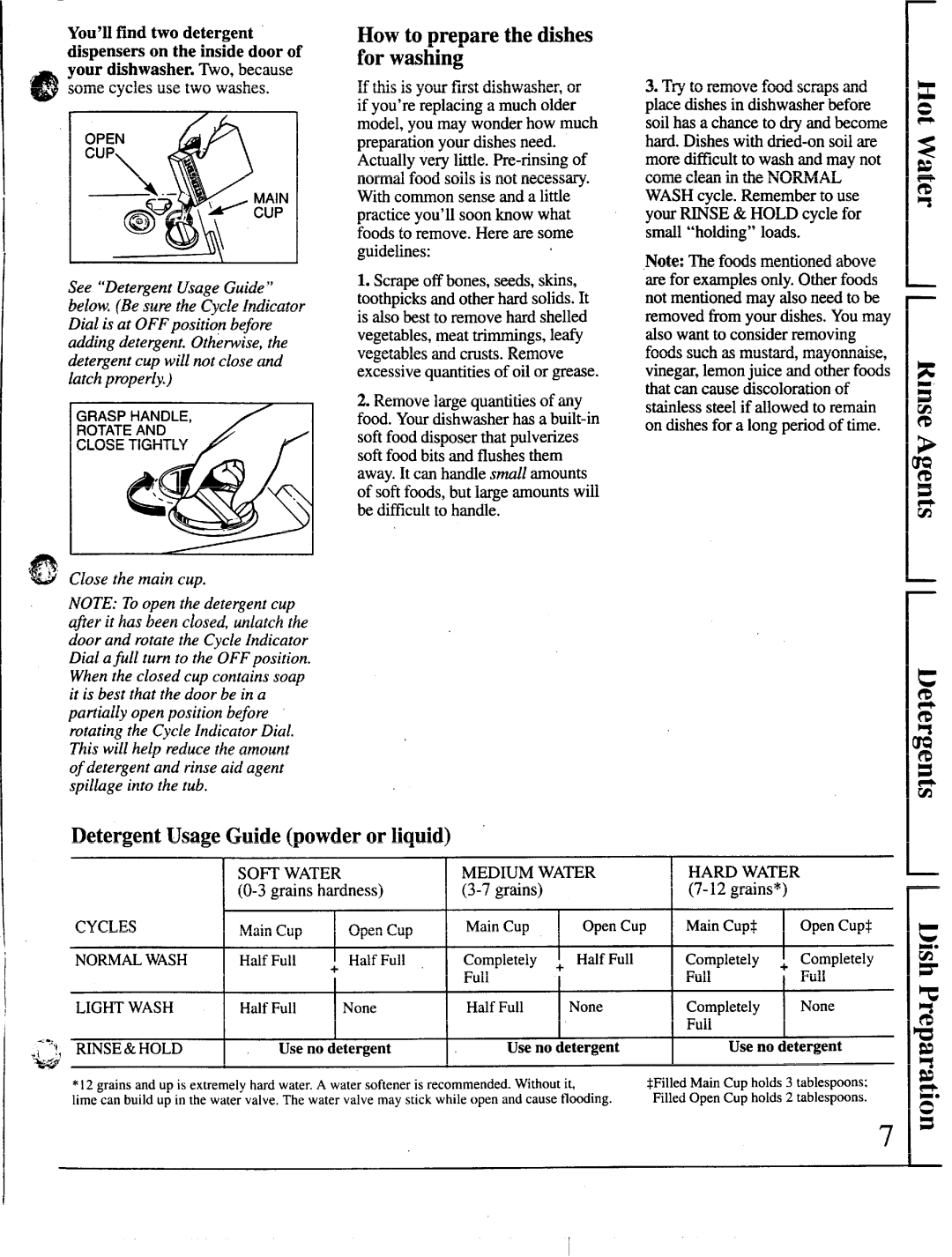
You’ll find two detergent dispensers on the inside door of your dishwasher. Two, because some cycles use two washes.
MAIN
CUP
See “Detergent Usage Guide” below. (Be sure the Cycle Indicator Dial is at OFF position before adding detergent. Otherwise, the detergent cup will not close and latch properly.)
GRASP | HANDLE, |
|
|
ROTATE AND |
|
| |
CLOSE | TIGHTLY | / | F’ |
|
| ||
How to prepare the dishes for washing
If this is your first dishwasher, or if you’re replacing a much older model, you may wonder how much preparation your dishes need. Actually very little.
1.Scrape off bones, seeds, skins, toothpicks and other hard solids. It is also best to remove hard shelled vegetables, meat trimmings, lea@ vegetables and crusts. Remove excessive quantities of oil or grease.
2.Remove large quantities of any
food. Your dishwasher has a
3.Try to remove food scraps and place dishes in dishwasher before soil has a chance to dry and become hard. Dishes with
Note: The foods mentioned above are for examples only. Other foods not mentioned may also need to be removed from your dishes. You may also want to consider removing foods such as mustard, mayomaise, vinegar, lemon juice and other foods that can cause discoloration of stainless steel if allowed to remain on dishes for a long period of time.
Close the main cup.
NOTE: To open the detergent cup afier it has been closed, unlatch the door and rotate the Cycle Indicator Dial a full turn to the OFF position. When the closed cup contains soap it is best that the door be in a partially open position before rotating the Cycle Indicator Dial. This will help reduce the amount of detergent and rinse aid agent spillage into the tub.
Detergent Usage Guide (powder or liquid)
| SOFT WATER | MEDIUM WATER | HARD WA~R |
| |||
|
| (7- 12 grains*) |
| ||||
CYCLES | MainCup | Open Cup | Main Cup | Open Cup | Main Cup~ |
| Open Cup* |
NORMAL WASH | Half Full | + Half Full | Completely | + Half Fu1l | Completely | + | ;:lypletely |
|
|
| Full |
| Full | ||
LIGHT WASH | Half Full | None | Half Full | None | Completely |
| None |
|
|
|
|
| Full |
|
|
RINSE & HOLD | . Use no detergent | ~ | Use no detergent |
*12 grains and up is extremely hard water. A water softener is recommended. Without it,
lime can build up in the water valve. The water valve may stick while open and cause flooding.
Use no detergent
$Filled Main Cup holds 3 tablespoons; Filled Open Cup holds 2 tablespoons.
‘7
